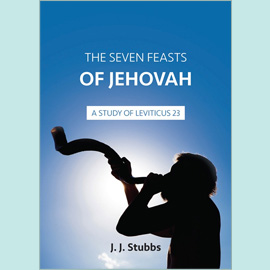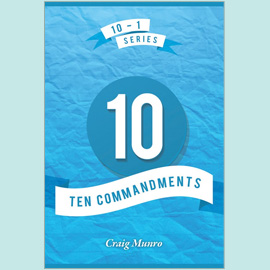The Transfiguration was one of the most remarkable moments in Christ’s earthly life and ministry and pivotal in the Synoptic Gospel records, although it remained a close secret to a chosen few disciples until after His resurrection. We shall consider the Scripture records of this scene on the Holy Mount under four headings.
Its Setting
Christ’s Transfiguration is recorded in Matthew 16.28-17.8, Mark 9.1-10, and Luke 9.27-36. The event took place about a week after the Lord had first foretold to His disciples His rejection by the religious leaders, His suffering, death, and resurrection. In Matthew chapters 16-17 it is the last of four consecutive revelations - first that He is the Christ, the Son of the living God, second that He would build His Church after Pentecost, third that He must bear His Cross and that all His disciples should do the same, and, fourth, that He will one day come in glory to reign. From this point onwards in these three Gospels His pathway leads directly towards the cross. The Transfiguration, therefore, occurs at a critical and pivotal point in our Lord’s life and ministry - after His rejection by the nation of Israel as a whole, and just before He set His face like a flint to go up to Jerusalem to die there as a ransom for all believers.
Its Salient Features
First, the Lord’s Transfiguration took place on a high mountain alone with His three closest disciples - Peter, James, and John. The mountain was probably Hermon above Caesarea Philippi, not Tabor further south. It is one of eight mountain scenes in Matthew, the Gospel of the King.
Second, the Lord was transfigured, or changed into another form, before them. Matthew says that His face shone like the sun. Luke says that it was "altered", or "became quite different" from normal. A glorious heavenly light shone out through Him. His clothes became white "as the light" (Matthew), or "as snow" (Mark), while Luke says that they were "glistering", or flashing like lightning.
Third, two men, recognised to be Moses and Elijah, appeared there in glory to talk with Christ. Luke alone tells us the subject of their conversation - Christ’s decease, or "exodus" from this world by way of death and resurrection, which He was about to accomplish victoriously at Jerusalem.
Fourth, Peter, James, and John were at first overcome with sleep, as they were on another momentous occasion in the Lord’s life - His agony in the Garden of Gethsemane. But when they awoke, they witnessed His glory and saw Moses and Elijah. Then, as the men were departing from their conversation with the Lord, Peter, impetuous as usual, suggested that it would be good to continue the scene by making three booths, as at the Feast of Tabernacles, one each for the Lord, Moses, and Elijah. While the booths were appropriate in a scene reminiscent of Israel’s future millennial kingdom glory, it was not appropriate to put Christ on the same level as Moses and Elijah, for He is always unique and transcendent above all others, the incomparable Christ.
Hence, fifth, God the Father intervened directly in the scene to rebuke Peter and assert His Son’s true identity and worth. The Shekinah glory cloud of the Lord’s immediate presence overshadowed them all, and instilled a reverential fear, perhaps even an awesome terror, into the disciples. Out of the cloud came the voice of God saying, "This is my beloved Son, in whom I am well pleased; hear ye him" (Matthew), not just Moses and Elijah. This so terrified them that they fell flat on their faces.
Sixth, Jesus reassured them that they need not fear, and when they looked up again, they saw no one except Jesus only with themselves. The glory cloud had now departed; the Transfiguration vision was over.
Finally, Jesus instructed the three disciples not to divulge this vision until after He, the Son of man, God’s predestined King, had risen from the dead. This they complied with.
Its Special Significance
First of all, the Transfiguration is a wonderful confirmation to us of God the Father’s approbation of His Beloved Son incarnate in the face of mankind’s complete rejection of Him. Christ is God’s uniquely-loved Son from all eternity, in whom rests all His delight, and His Son’s morally perfect earthly life and ministry have not in any way changed that verdict from heaven. He alone is worthy of all our attention, worship, and obedience; this is one important significance of the vision.
However, all three Synoptic Gospel writers concur in explaining the full significance of the vision in the verses which immediately precede its commencement, namely, Matthew 16.28, Mark 9.1, and Luke 9.27. In all these verses the Lord predicts that some of the disciples who were then present standing with Him would not die until they had seen Christ the Son of man’s coming kingdom glory. And Peter, one of the three disciples who witnessed the Transfiguration, confirms this interpretation of the vision in his second letter, in 2 Peter 1.16-19. There he says that it was a preview of "the power and coming" of the Lord Jesus Christ, and that they had been eyewitnesses of the majesty which Christ will openly display when He comes again to earth in glory to reign as King of kings and Lord of lords. This also confirms the truth of Old Testament prophecy, assuring us that it will all one day be fulfilled. Prophetic previews like the Transfiguration vision act for us like a light in a dark place, that is, in a dark world, which still utterly rejects Christ and persecutes all Christians.
In this connection, we can perhaps view all the participants in the vision as representative men, directing our attention to different groups of saints who will enter the millennial kingdom when Christ returns. Perhaps Moses represents those who will have died and been resurrected to share in the kingdom glory, while Elijah could represent those who will have been translated to glory at the rapture of the Church without dying. And Peter, James, and John could represent the faithful Jewish remnant of believers on earth at that time.
Its Spiritual Purpose
This can be readily understood in light of the previous paragraph in all three Synoptic Gospels. There the Lord had predicted His own suffering, death, and resurrection, and had then told all His disciples to bear their cross of whole-hearted allegiance to Himself after Him, and to be prepared for similar self-sacrifice and suffering in this life for His sake. The following vision of Christ’s millennial kingdom glory then assured them, and therefore ourselves us, that their suffering for His sake now would not be in vain, because Christ will ultimately be vindicated, and rule victoriously in glory in the very scene of His rejection. So, despite all adverse appearances now, we are on the victory side and will share Christ’s triumph in the end. Christ will see the fruit of "the travail of his soul, and shall be satisfied" (Is 53.11), and we shall receive an eternal reward for our faithfulness. This prophetic preview of coming glory with Christ, like all those elsewhere in Scripture, encourages us to go on battling with the forces of the world, the flesh, and the devil, and strengthens our sometimes faltering faith in Him.
Finally, why does John, who was also present on the Mount of Transfiguration, not record this vision in his Gospel? Probably the answer is that John takes a completely different, though complementary, view of Christ as the Only-Begotten Son of God from heaven revealing His Father in all His words and ways. In his prologue John views Christ, the heavenly Stranger, as rejected by men from the very beginning (Jn 1.11). Here, too, John records that they beheld the glory of the Word of God incarnate, full of grace and truth, throughout His earthly life, not just at the Transfiguration. Viewed in this light, the Transfiguration was not so relevant to John’s spiritual purpose. It was, however, very relevant to the purpose of the other Gospel writers. Let us, therefore, be encouraged by their previews of our Lord’s transcendent millennial glory to continue serving Him whole-heartedly and sacrificially!
Concluded.









